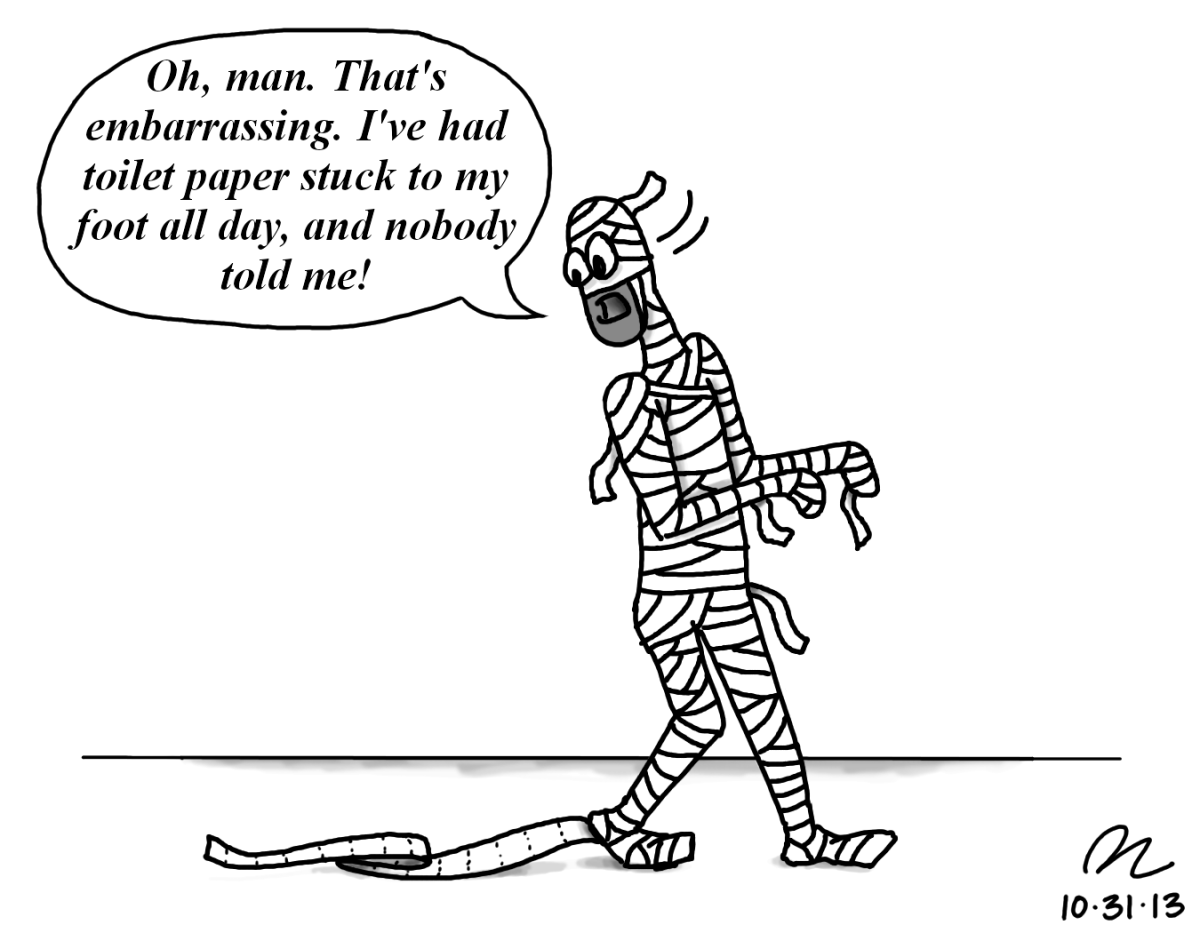Today is Halloween. We spent the month building up to this day decorating our houses with imitation spider webs and plastic skulls and by hosting horror movie showings and costume parties.
Tonight, college students will wander drunkenly through the streets in their most creative or costly attempts at a good costume. Some men will prance about shirtless in short shorts. Some women will march along in 6-inch heels and 26-inch dresses.
Though we’ll probably see more if not an equal amount of the former than the latter, it is the women we will dub “sluts.”
Scantily clad women will be the butt of most jokes tonight, at least for anyone trying to feign social dissatisfaction or superiority. Yet we will say nothing of the scantily clad men drunkenly gallivanting about.
But there’s a paradox in the mix.
The media encourages women to buy the sexy version of their costumes. We think of the extremes: sexy hamburgers, sexy pizzas and sexy cookie monsters. Far more than men, women are encouraged — if not commanded — to dress sexy for the night.
Our society dictates that women ought to do their best to look sexually appealing on Halloween, but our society also dictates that women ought not to be skanks.
Halloween is a double-edged sword, as Molly Ringwald’s character from The Breakfast Club might put it.
There’s this attitude that if women don’t dress how men expect them to, they’re prudes. If they do, they’re sluts. Women can’t win.
I’m not an authority on what most women do. But I mostly see women walking the middle path. The women who actually dress up as sexy ghosts are few and far between, but they’re still the ones who will receive most of societal backlash.
No matter how many more men than women walk around wearing almost nothing, it is still the women who will receive unjust criticism.
We call this slut shaming, and it’s extremely problematic.
For starters, it treats female sexuality as abnormal or something to be ashamed of. It creates another form of horizontal hostility, which pits women against each other instead of against our patriarchal norms.
Slut shaming sends a message that those deemed sluts are in some way less than human and are not to be associated with. It implies that sexuality is, in some way, associated with respect.
Slut shaming perpetuates the oversexualization of innocuous body parts — legs, arms and breasts (yes, those things on women’s chest are not sex organs, but are meant to feed newborns. Who knew?)
Worst of all, slut shaming contributes to rape culture — especially on Halloween. We tell the women wearing revealing Halloween costumes that they are, in fact, “asking for it,” or else they wouldn’t have dressed like that.
For more information about rape culture, Justine Schnitzler’s column, “The normalcy of tragedy — rape culture revisited,” which ran in the Oct. 20 issue of the Technician goes a little more in depth.
Between encouraging women to dress to please men lest they be labeled prude and telling those women they’re sex-starved sluts, our societal approach to Halloween leaves little room for female freedom.
Between praising the guy in the sexy Luigi costume and crucifying the girl dressed as sexy Mario, maybe we ought to rethink what our costumes indicate about our culture.
Between expecting the girl dressed as a sexy Cherokee costume to crave nothing more than drunk, heterosexual intercourse with the guy dressed as a Navajo and ignoring the blatant cultural appropriation, maybe we should re-evaluate what our costumes actually say about us.





